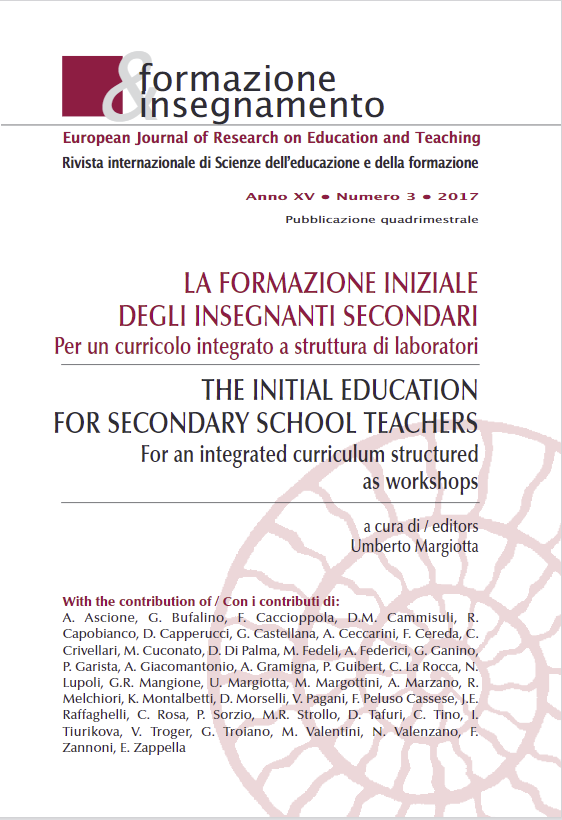Crescere in natura: spontaneità, praticità e attualità del metodo Agazzi
Resumo
L’articolo analizza i principi del metodo educativo delle sorelle Agazzi, le
critiche mosse e le attuali applicazioni in un quadro di ricerche e studi sperimentali
internazionali. Come, sulla scia pedagogica, nuove realtà educative
immerse in contesti naturali, rivolgono lo sguardo verso progettualità proprie
di un’educazione outdoor in cui il fulcro è il movimento. Si rifletterà su
realtà educative attualmente più simili come micronidi, agrinidi e agriasili.
Il bambino agazziano è del fare e del fare in autonomia quindi un’attenzione
all’educazione sensoriale e all’area cognitiva con contenuti mirati
prevedendo anche l’uso di diversi tipi di materiali: naturali, artificiali e di recupero.
Sviluppo di una pedagogia di stampo naturalistico con al centro
l’alunno inserito in un contesto formativo visto e vissuto come luogo familiare,
di condivisione e crescita, prima che di apprendimento.
Downloads
Publicado
Como Citar
Edição
Seção
Licença
Copyright (c) 2017 Manuela Valentini, Giovanna Troiano

Este trabalho está licenciado sob uma licença Creative Commons Attribution 4.0 International License.
Formazione & insegnamento é distribuído sob a Attribution 4.0 International (CC BY 4.0).
Para obter mais detalhes, consulte nossa Política de Repositório e Arquivamento, bem como nossos Termos de Direitos Autorais e Licenciamento.





